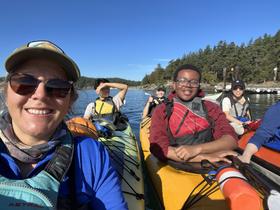These days there's an app for everything. Apps have been around since Apple launched its App Store in 2008. Since then, Android's Play Store and Apple's App Store have grown to offer more than 4 million apps. Because apps reside on smartphones, they are always ready to use. Apps are an efficient way to shop, do your banking, schedule an Uber, scan your boarding pass, listen to your favorite music and so much more. That's why your boarding school needs an app for its alumni. Because your graduates are spread far and wide geographically, your alumni app will keep them in the loop. That's important to them because they love the school which gave them such a great start in life. It's vital for your finances because easily accessible information and communications will lead to successful annual fund drives and major gifts.
This video illustrates what an alumni app can do.
Stay connected.
Obviously, your more recent graduates are an app-friendly lot. So, it just makes so much sense to keep in touch with them via the method which they use all the time. Snail-mail and even email will not get their attention the way your wonderful, informative app will. Snail-mail and email have their place. Your older alumni will probably appreciate your communicating with them that way. However, don't assume anything. Many 70 and 80-year-olds love using apps and their smartphones. They were


















